Tanzanian safari: A visit to a Maasai village
The next day, on the way to Olduvai Gorge, where we enjoyed a short natural-history talk (and I inexplicably took no photos), we stopped to visit a Maasai village. The chief greeted us warmly by the road. An incessant wind prompted us to shield our eyes from the grit in the air, and the Maasai to wrap themselves tightly in their colorful shukas.
A tall fence made of thorny branches, built by the men, surrounded their homes and a central cattle pen and protected the people and their livestock from predators. They closed it up at night, we were told. Cattle are the main source of wealth for the Maasai, and a man is esteemed based on how many cattle and children he has. When we visited, the boys of the village had already taken the cattle out to graze in the surrounding hills, so we didn’t get to see the herd.
After the chief had spoken with our tour guide (he spoke English well), he welcomed us to the village. Then the young men and women greeted us with their distinctive chanting, thrumming songs and a dance.
As the men danced, the women chanted with high, loud, singsong voices.
They are a tall people, with many of the men and even some of the women as tall or taller than I am (5’10”).
After the songs ended, they led us into their village with smiles.
The villagers lined up in a semicircle, men on one side, women and girls and little boys on the other.
Male visitors were invited to do the jumping dance with the men.
The women pulled in the female visitors, placing their distinctive beaded necklaces around their necks and encouraging them to dance, jumping to rock their own elaborate necklaces up and down.
The men began to jump, leaping straight up with their arms held at their sides — like human pogo sticks. They made it look effortless.
Sometimes they jumped in pairs, sometimes solo. After a few jumps, the young man would step back to rest and another would instantly step forward to take his place.
The women watched and sang. Maasai women, we were told later by our tour leader, are valued lower than cattle in their culture and still endure female circumcision (genital mutilation) at adolescence, although the government has declared the practice illegal. Aside from the dancing, the women of the village did not interact with us at all, leaving that to the men.
The Maasai houses are small, rounded structures made by the women out of sticks, mud, and cattle dung.
Each woman, we were told, makes her own hut for herself and her children — and for her husband when he chooses to visit (he may have several wives).
The men gave us tours of the huts. Dad and I were invited into one by a young man named Elias, who spoke some English. The doorway was low and curved to the right, perhaps to keep out the wind?
The structure was low, dim, and sparsely furnished as you’d expect with a semi-nomadic people. Two narrow beds made of stretched cowhide filled one side of the hut, and Elias invited us to sit beside him there. Three people slept in one bed, he said, and two in the other.
Under a small smoke hole were the ashy remains of a fire and a few pots and cups. In this cooking area, Elias explained, a woman prepares meals of cow’s blood and milk. The blood is obtained by nicking a cow’s jugular vein.
Next we were led to the schoolhouse, located outside the thorn fence. Here’s another view of the village from outside the fence.
Inside a stick-walled, thatched-roof schoolhouse, the teacher, her baby strapped to her back, asked the children to sing for us.
The children learn a little English and Swahili, the official languages of Tanzania. The Maasai may have their own language, but I didn’t learn what it’s called.
Some of the children wore colorful shukas, while others wore secondhand American T-shirts like the Abercrombie & Fitch shirt visible here. We’d seen piles of used American clothes for sale in the village markets, so if you ever wondered where your castoff, Goodwill-donated T-shirts go, you may be surprised to learn they’re shipped to Africa.
After the school tour, the men demonstrated their skills. A young man showed us how quickly he could make a fire. He twirled a slim stick in a hole drilled in another piece of wood. Beneath the hole, clustered on the machete, a pinch of dry moss began to smoke.
He picked up the smoking moss and put it inside a broken-open piece of cow dung. He held the pieces of dung close together to protect the moss from the wind and gently blew on it. The moss and dung burst into flame. All together, it took about a minute and a half, maybe less.
They also showed us how to throw spears.
At the end of the visit, we were invited by the men to purchase beaded jewelry, belts, and ornaments made by the women of the village. The men handled all the transactions. I bought a man’s necklace of carved wood and porcupine quills for my son, a beaded purse-like necklace to hold “medicine” for my daughter, and three star-shaped ornaments, which we hang on our Christmas tree each year, all for $15. U.S. dollars were accepted, with change readily offered in U.S. bills and coins.
Up next: Game drives and a sunrise hot-air balloon ride over the Serengeti. For a look back at the incredible animal-watching at Ngorongoro Crater, click here.
All material © 2006-2014 by Pam Penick for Digging. Unauthorized reproduction prohibited.


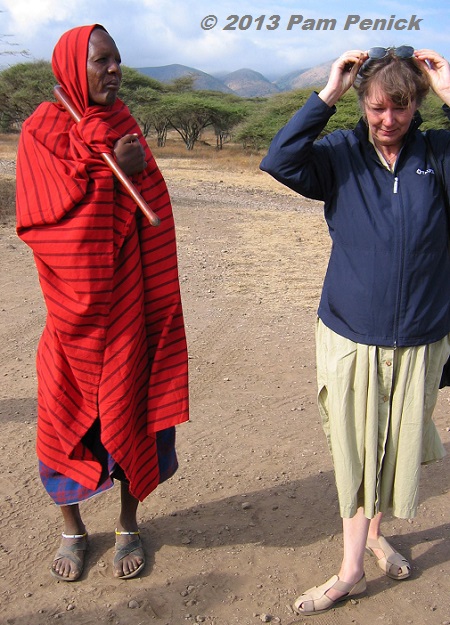
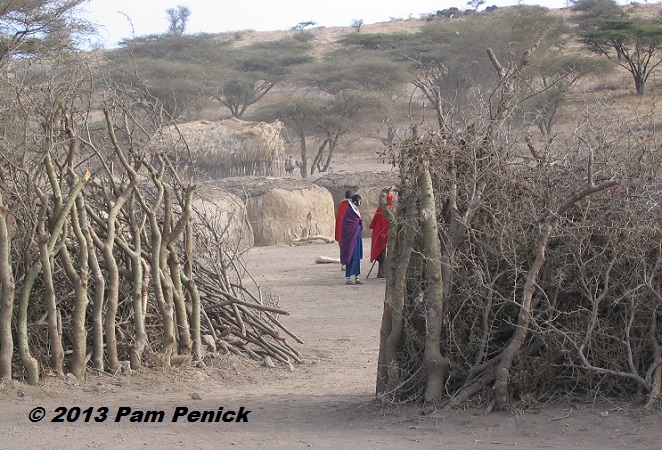
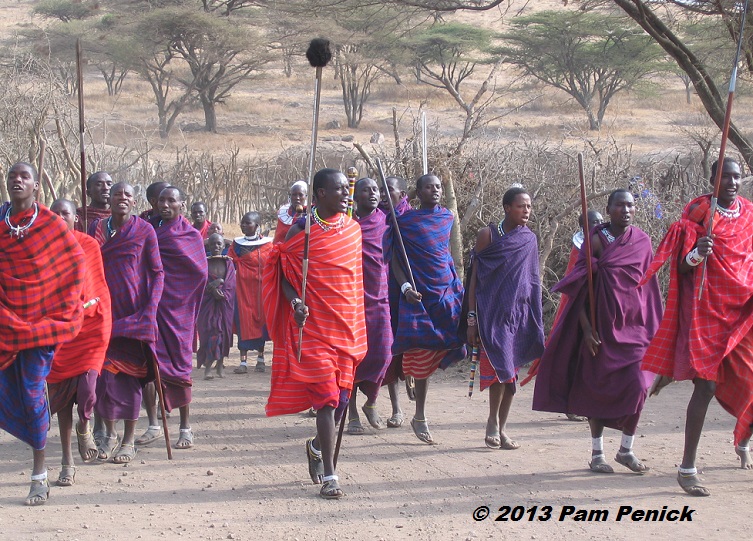
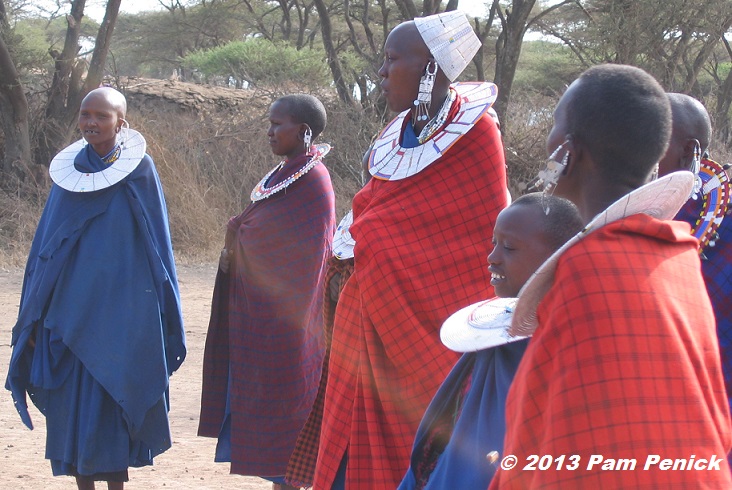
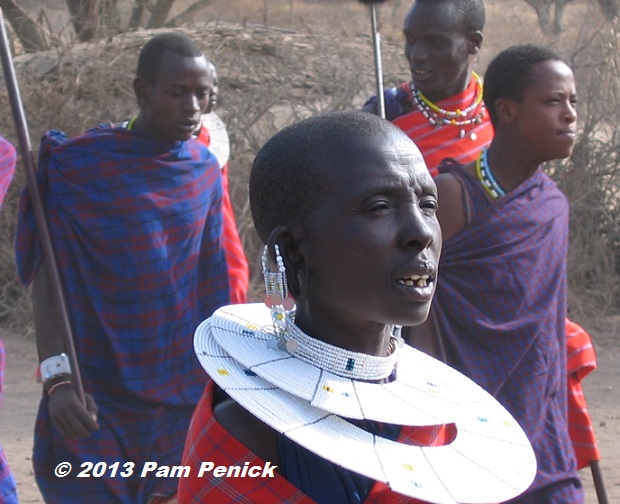
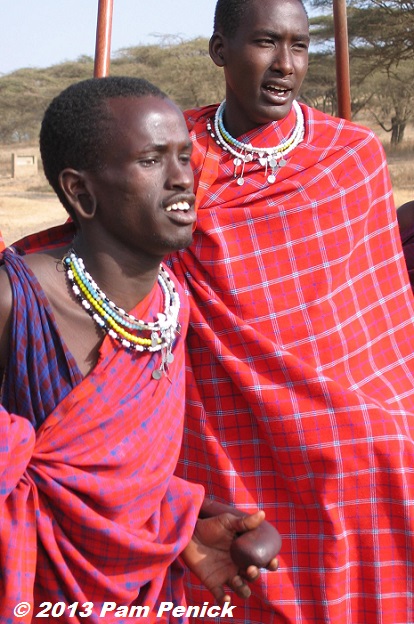
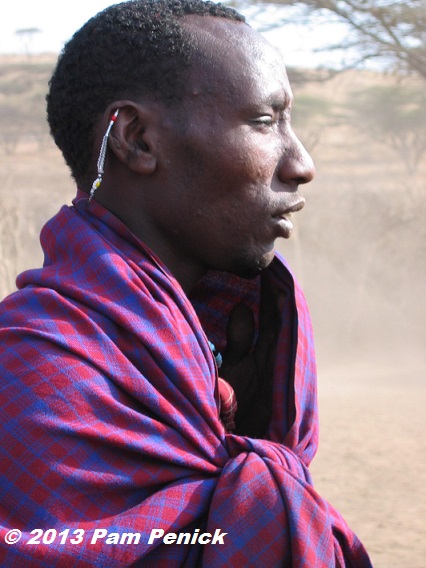
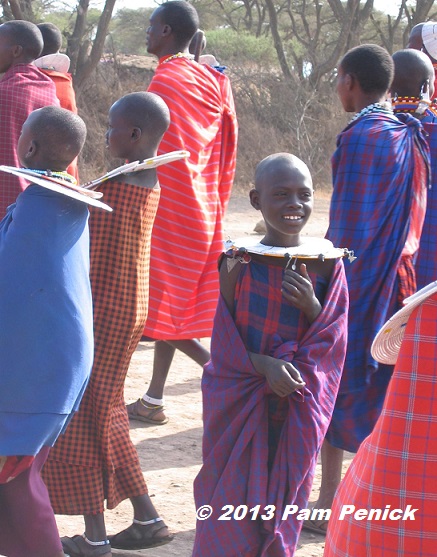
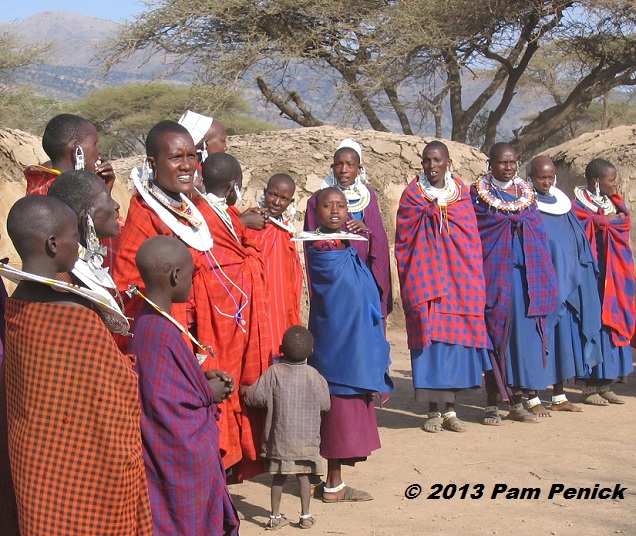
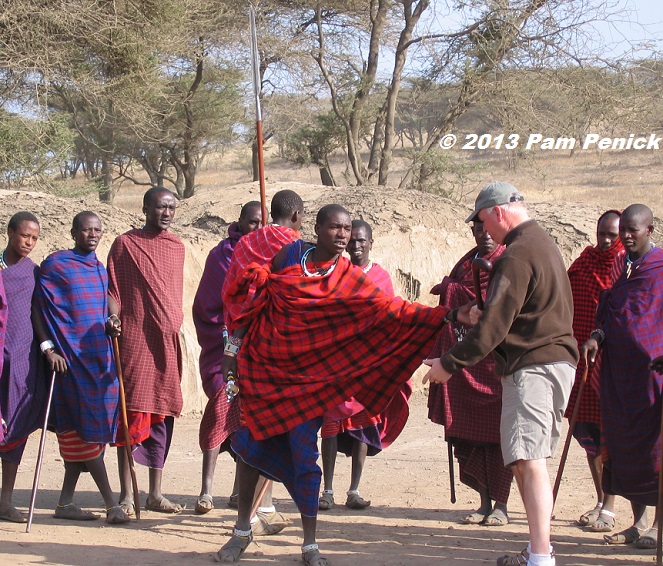
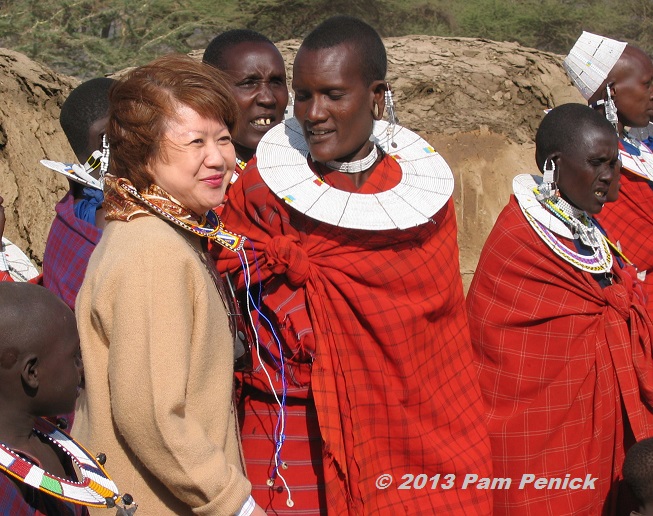
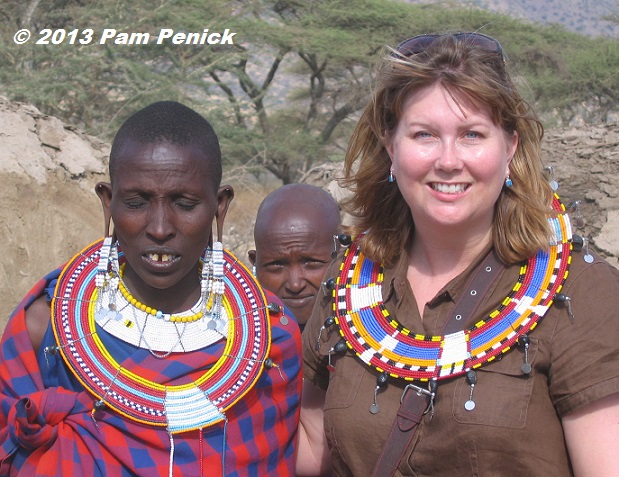
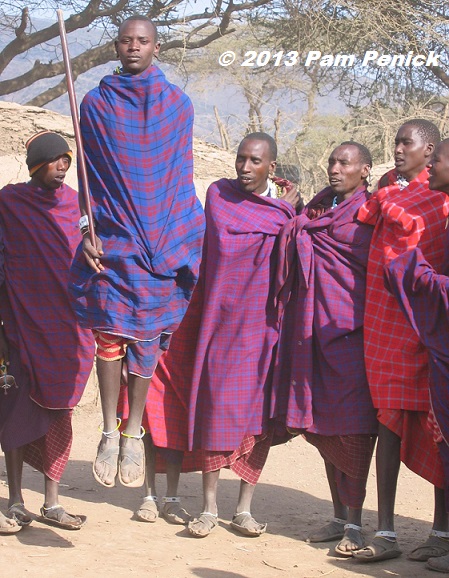
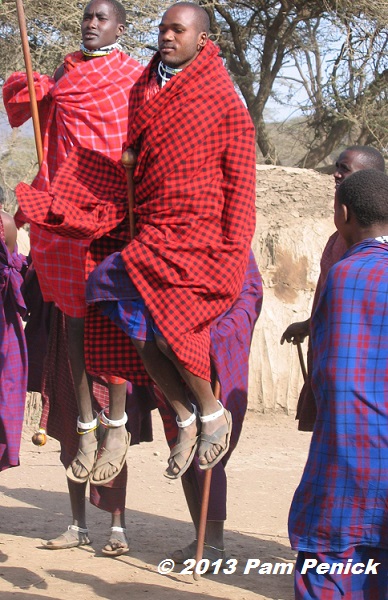
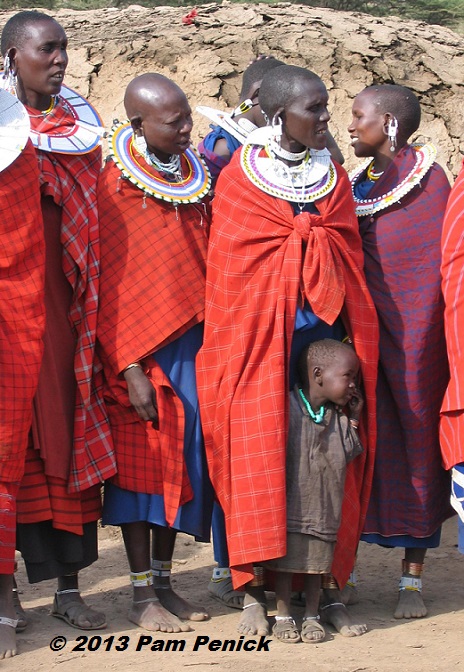
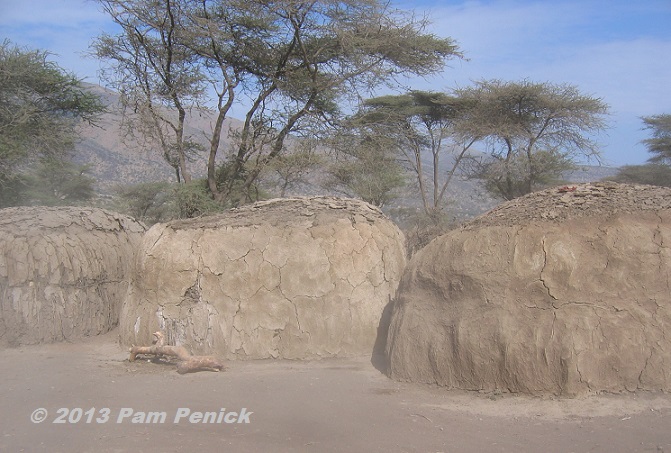
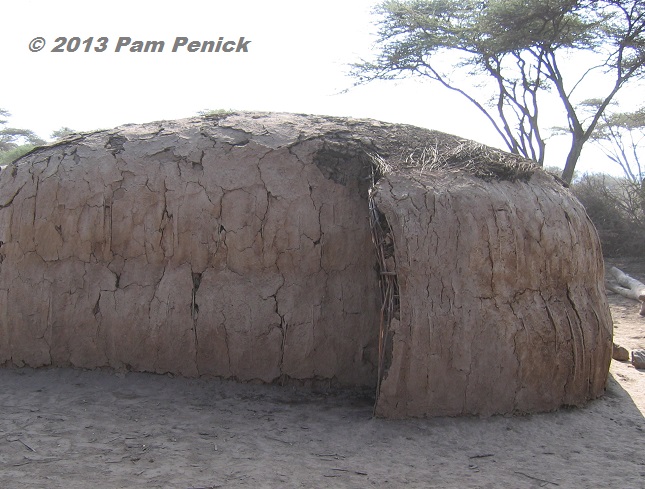
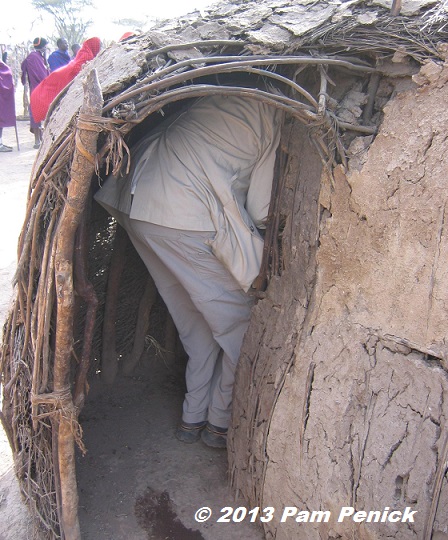
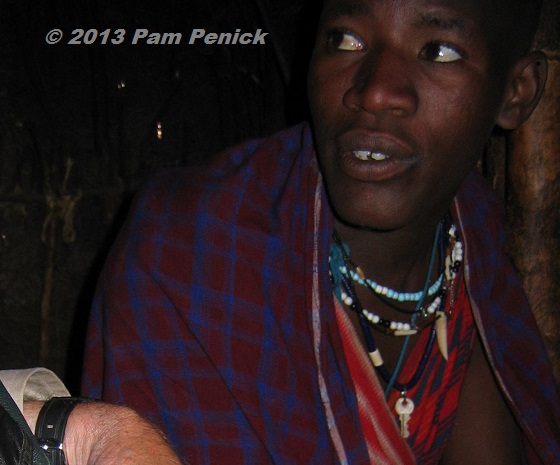
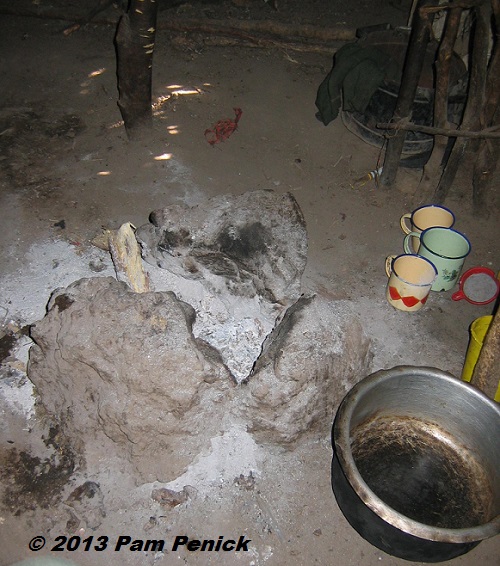
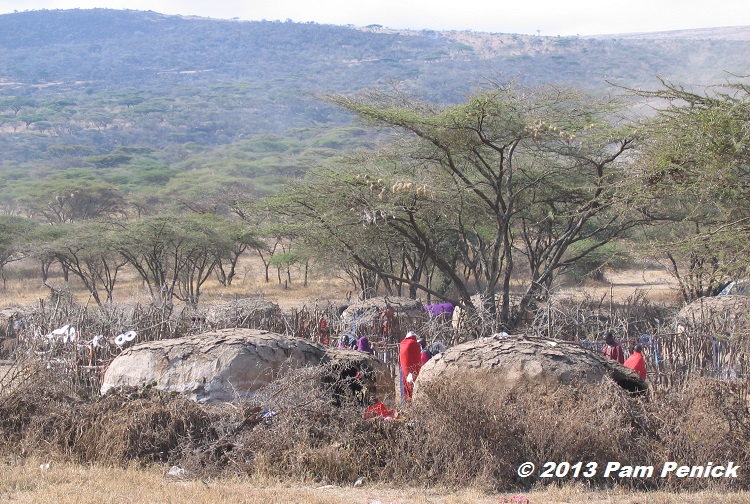
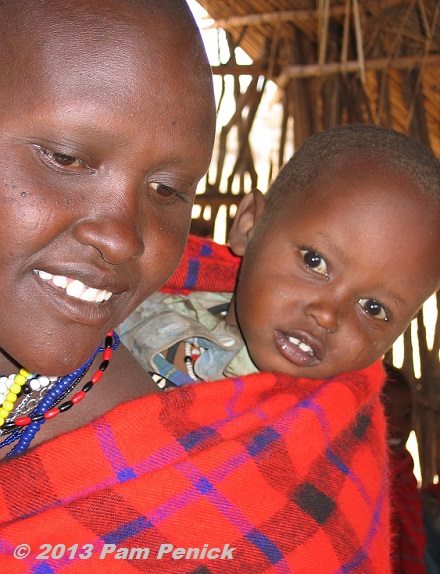
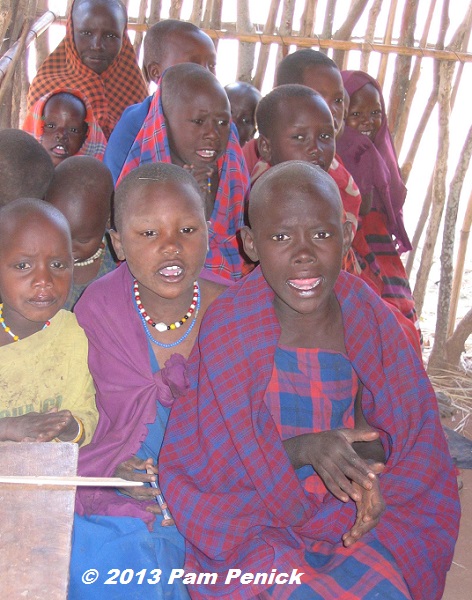
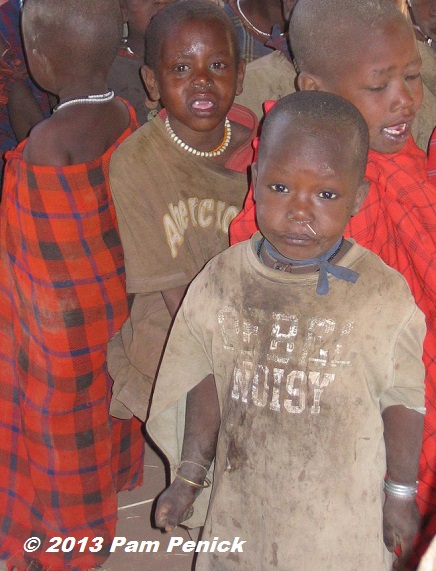
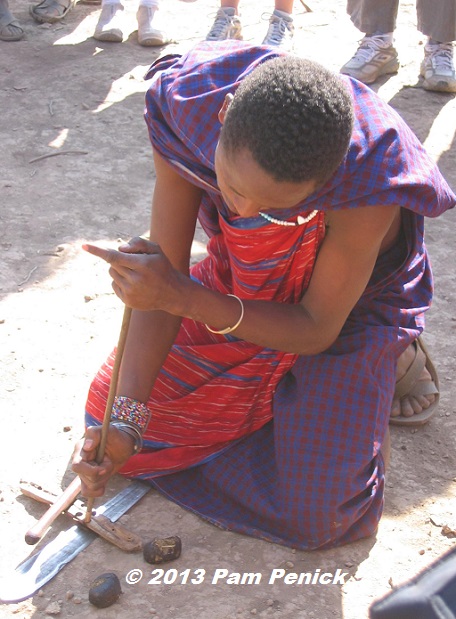
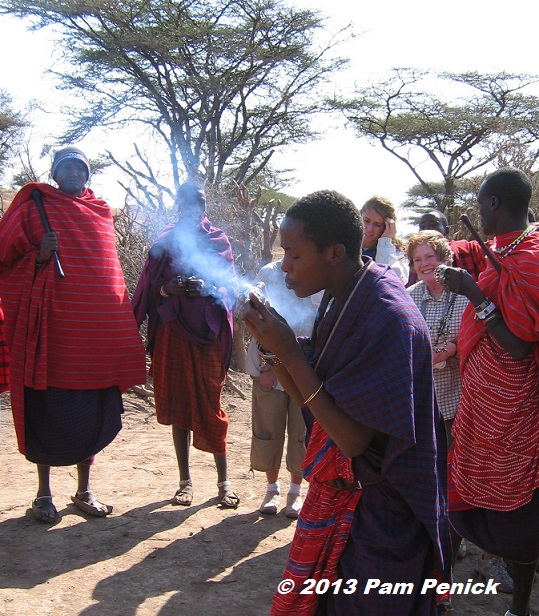
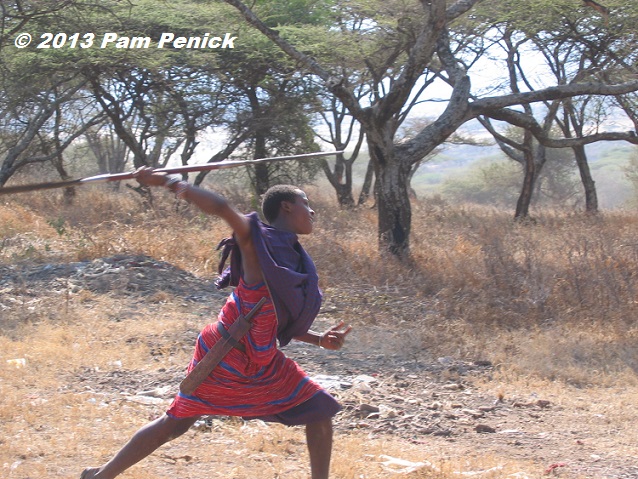
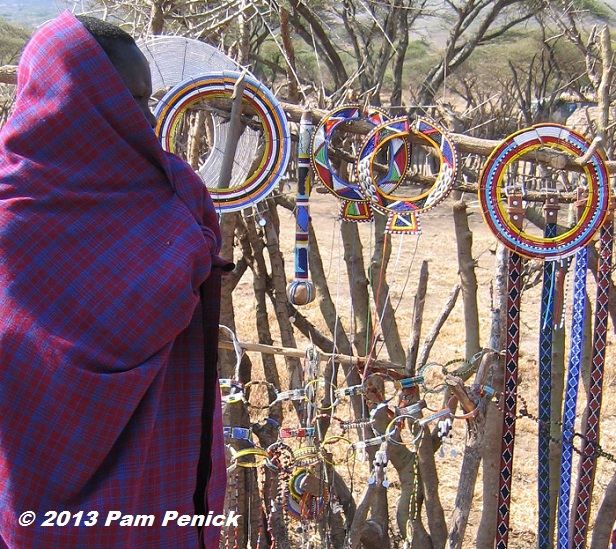
I love buying something on a trip to put on the christmas tree. It seems that at that time of year especially one is remembering what happened over the years. Fun to see a relic on the tree.
Yes, I remember my travels that way too — a yearly reminder of fun times. —Pam